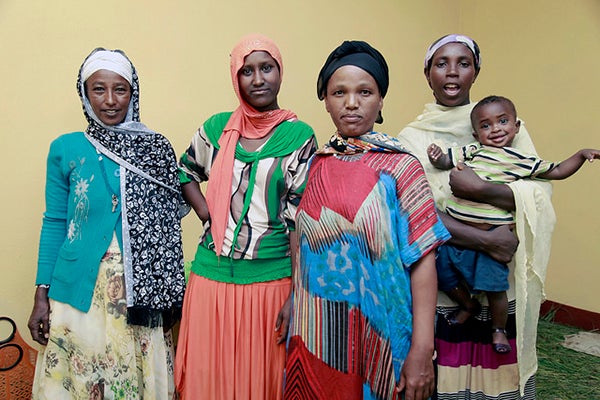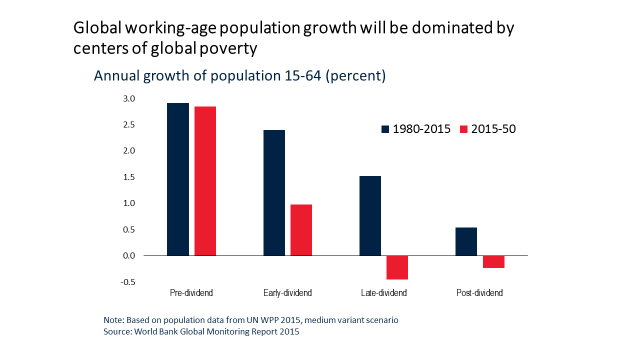
We are writing this from Pretoria, at the seventh African Population Conference (APC) jointly hosted by the government of South Africa and the Union for African Population Studies (UAPS). The conference is convened only once every four years, so this was a rare opportunity for the World Bank Group to engage the region’s academicians and policymakers on the conference’s key theme: Demographic Dividend in Africa: Prospects, Opportunities and Challenges.
The theme could not be timelier- a few countries in Africa are at early stages of a demographic transition that could open up an opportunity for a demographic dividend, but few have in place policies that equip the population with skills to spur economic growth.
Africa – with a growing population projected to reach 2.5 billion people by 2050- will be home to the largest and youngest countries in the world, with their populations concentrated among young adults and those of working age. More than half of global population growth through 2050 is projected to occur in sub-Saharan Africa, and annual growth rates of working age population will be higher than 2.7%. Demographers also project that a larger proportion of poor people will live in current pre-demographic transition countries. There is increasing recognition in Africa that these demographic changes are exciting and challenging at the same time. Multiple policies are needed urgently to prepare for a population of 2.5 billion on the continent by 2050.
There is increasing recognition in Africa that these demographic changes are exciting and challenging at the same time. Multiple policies are needed urgently to prepare for a population of 2.5 billion on the continent by 2050.
At this week’s gathering of 400 demographers in Pretoria, discussions have touched on determinants of fertility transition; adult mortality and aging; and migration and urbanization. Big data and the data revolution have been popular topics as well, including the importance of censuses and vital statistics; as well as research gaps in demography- mostly on the measurement of the demographic dividend; and the impact of a changing age structure on poverty and inequality.
There were also important discussions on the skills needed to fill the gaps in research capacity for new kinds of data becoming available on the continent (think mobile phone data for migration analysis). Talk of increasing data needs to track the Sustainable Development Goals (SDGs) has again highlighted the shortage of technical demographers in Africa.
The 8th APC will be held in 4 years’ time (2020). By then the population of sub-Sahara Africa will have grown by 130 million people -- that’s an increase from about 962 million people to 1.1 billion people. Colleagues we’ve talked to this week are generally optimistic that African governments recognize the potential advantages of the shifting demographic structure, but there is also some pessimism regarding the hard work ahead to put in place the right policies to realize opportunity in the opening demographic window.
Follow the World Bank health team on Twitter: @WBG_Health
Related
Demographic Transition in Africa: Dividend or Disaster?
Global Monitoring Report
Global Financing Facility
Sahel Women’s Empowerment and Demographic Dividend Project



Join the Conversation